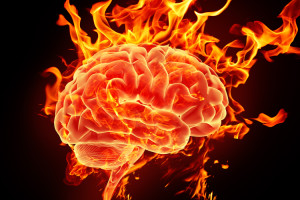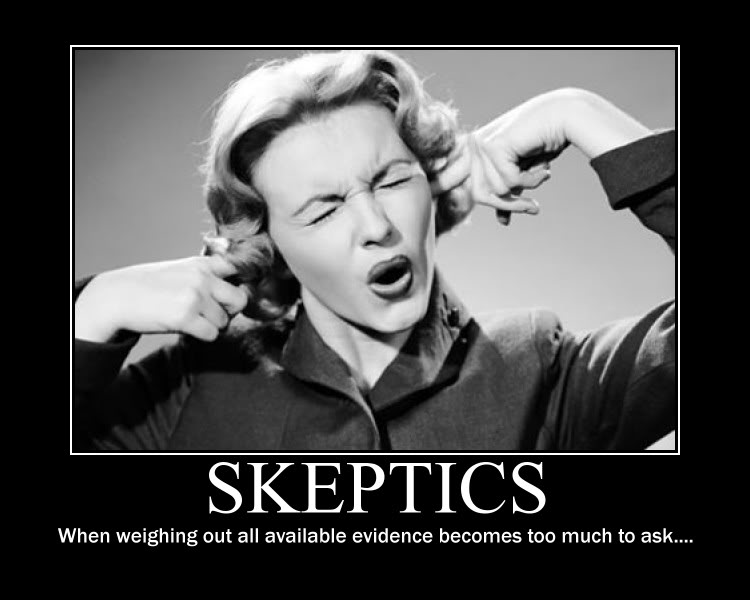By Deepak Chopra, MD and Henry Stapp, PhD
 Our previous two posts on the role of mind in nature have argued that rational analysis of the empirical evidence entails that the world is not only influenced by ideas, but consists of them. Of course, the everyday experience of a physical reality made of things that seem solid can be very compelling, especially when combined with the classically held understanding of subatomic particles orbiting around one another like small planets. This view, which everyone is familiar with, supports the existence of a real external world independent of mind. When you stub your toe on a rock, you don’t feel it’s like stubbing your toe on an idea. Indeed, as Erwin Schrödinger, a principal founder of quantum mechanics, remarked; “It comes naturally for the simple man of today to think of a dualistic relationship between mind and matter as an extremely obvious idea. … But a more careful consideration …[leads to the conclusion] that surrender of the notion of the real external world, alien as it seems to everyday thinking, is absolutely essential.”
Our previous two posts on the role of mind in nature have argued that rational analysis of the empirical evidence entails that the world is not only influenced by ideas, but consists of them. Of course, the everyday experience of a physical reality made of things that seem solid can be very compelling, especially when combined with the classically held understanding of subatomic particles orbiting around one another like small planets. This view, which everyone is familiar with, supports the existence of a real external world independent of mind. When you stub your toe on a rock, you don’t feel it’s like stubbing your toe on an idea. Indeed, as Erwin Schrödinger, a principal founder of quantum mechanics, remarked; “It comes naturally for the simple man of today to think of a dualistic relationship between mind and matter as an extremely obvious idea. … But a more careful consideration …[leads to the conclusion] that surrender of the notion of the real external world, alien as it seems to everyday thinking, is absolutely essential.”
Schrödinger knew, based on empirical evidence that at the basic level a subatomic particle doesn’t behave like a tiny planet but like a smear of possibilities. Our experience of the solidity of day-to-day reality–for example the hardness of a rock–is mathematically explained in terms of the rock’s elementary particles being just such smears of possibilities. Schrödinger had a huge advantage over the preceding German idealist philosophers like Hegel, who posited that reality was more like an idea than a thing. They had arrived at this conclusion on the basis of logic alone, without the critical empirical evidence. That evidence was supplied by experiments done during the 20th century.
Empirical evidence ought to be persuasive to scientists, but mainstream opinion in science is often governed more by socio-political forces and personalities than by rational thinking based on the data. Nowhere is this more evident than in present-day neuroscience, where in spite of the strong evidence for quantum effects in biological systems and in the brain, workers doggedly adhere to the physicalism that Francis Crick called for decades ago (i.e., reducing all the mind to physical processes in the brain and nothing more).
To rationally settle this issue one needs an adequate conceptual framework. Finding one is not easy, however. That’s because the dynamics involved is described in three different incompatible languages. The empirical data is expressed in terms of the concepts of classical physics, while the mathematical machinery needed to explain the detailed structure of that data is couched in the very different mathematical language of quantum physics. Then there is the question of the possible physical effects of our thoughts, ideas, and feelings, which are described in a third language, the language of psychology. According to classical physics, mental events can be left out of the determination of physical properties. But according to orthodox quantum mechanics, our mental intentions play an essential role in the determination of brain behavior.
Such a mismatch could be compared to investigators showing up at the scene of a wreck by the highway where a car has landed in a snow bank. One investigator, being a classic physicalist, says that the cause of the wreck was a sudden swerve of the car’s tires on the icy road. Another investigator, a quantum physicist, produces a set of calculations derived from Schrödinger’s equation that pinpoints the statistical probability of the car winding up where it landed. A third investigator, a psychologist, points to the driver’s recent divorce, which led him to heavy drinking as emotional compensation. Three different descriptions are derived from the same event. Without a doubt, no matter which alternative you choose, the simple matter of physical cause and effect is no longer so simple.
The crucial question is whether the choices that you and I make in daily life are determined by purely mathematical rules. John von Neumann’s 1932 book, The Mathematical Foundations of Quantum Mechanics, says no: The orthodox interpretation of quantum mechanics requires the observer’s “ego” to enter into the unfolding of reality in a way that lies outside and beyond the known mathematics. In everyday life we certainly feel that the things we do, think, and say aren’t fixed by the laws of physics. According to classical mechanics, however, these feelings are illusions, whereas in orthodox quantum mechanics these feelings represent an awareness of the true nature of reality.
There are, of course, non-orthodox formulations of quantum mechanics, but they fail to meet the demands of its founders that the theory encompass the realities we know actually exist, namely our conscious experiences. (Who falls in love as a result of gravity, thermodynamics, and Newton’s laws of motion?) The main alternatives to the orthodox approach not only fail to bring our conscious experiences into their foundational structure, but they fail to explain rationally how a person’s known experiences can arise from physically described reality–the physical description contains no hint of their existence. There is no scientific virtue in avoiding all mention of our personal experience when science is supposed to be based on empirical (i.e., experienced) evidence. The offered alternatives actually tend to extol the fact that they lack any mention of consciousness in their foundations, instead of recognizing this as a likely fatal flaw. Yet that flaw is built into a theory based essentially on the concepts of classical mechanics, from which all connections to our experiences have been systematically removed.
Possible explanations of reality keep proliferating–with some truth it’s been said that there are as many quantum theories as quantum physicists. Actually, there are probably more theories than theorists, because when you confront a physicist who holds an unorthodox view, he soon changes to another view, recognizing that his prior view is not completely defined. As he shifts to ever new positions, the discussion goes nowhere.
But one can classify the existing theories as idealist, materialist, and dualist. Orthodox quantum mechanics is the prime dualist theory. But, as we have argued in the previous two articles, it essentially reduces to idealism when you analyze it. If we must choose between idealistic monism or physicalistic monism then it must be idealism. At the end of the day, the only realities that we really know exist are our ideas. That’s the basic point behind all idealisms. Even physical descriptions, as far as we can know them, are inventions of the human mind.
This last point is worth elaborating upon.
The scientific description of reality is essentially mathematical. To reduce Nature to a set of regular, universal “principles,” Newton applied mathematics to things located in a four-dimensional space-time filled with an infinity of points. (Imagine any location you’ve ever been in your life located on a three-dimensional chess board, with the addition of time as a fourth dimension.) The basic idea of classical (Newtonian-type) mechanics is that every fundamental property can be located at such a real place: these real points are where the basic realities of Nature reside. But how well does this idea fare when we demand compatibility with the quantum empirical facts, which are fundamentally incompatible with the basic concepts of classical physics?
In classical mechanics a “really existing” 4-D continuum of points provides the places for the assumed-to-exist real particles to be. In quantum mechanics we again use a 4-D continuum of locations, but as we’ve discussed, these are locations only of possibilities. In the switch from classical to quantum, the points of the 4-D continuum lose their status as the places where real things can be, becoming places where potentialities exist for experiences of seemingly real things to appear if an observer looks for them there. This is the crucial shift made by the founders of quantum mechanics and by von Neumann in order to cope rationally with the mysterious twentieth-century empirical findings. In so doing, space-time points were reduced to parts of an idea-like reality.
The persuasiveness of seeing the universe as mind-like isn’t new, and skeptics find themselves scoffing at the thoughts of some of the most distinguished physicists of the modern era. “I regard consciousness as fundamental. I regard matter as derivative from consciousness.” (Planck quoted in the Observer, 25 January 1931). The usual ploy among skeptics is to dismiss anyone who talks this way as a bad thinker or else a once-notable scientist who has lost it. But in truth the shoddiest thinking is among physicalists themselves, because their thinking is rooted in the classical concepts that have been found to be grossly incompatible with twentieth century empirical findings.
Equally strong are statements from the eminent British astronomer and physicist Sir Arthur Eddington: “The universe is of the nature of a thought or sensation in a universal Mind.” “To put the conclusion crudely – the stuff of the world is mind-stuff”. “It is difficult for the matter-of-fact physicist to accept the view that the substratum of everything is of mental character. But no one can deny that mind is the first and most direct thing in our experience, and all else is remote inference – inference either intuitive or deliberate.” (Eddington, 1928, The Nature of the Physical World, Chapter 13)
In 1961 Erwin Schrödinger wrote in the same vein and at length.
“… it comes naturally to the simple man of today to think of a dualistic relationship between mind and matter as an extremely obvious idea. … But a more careful consideration should make us less ready to admit this interaction of events in two spheres—-if they really are different spheres; for the … causal determination of matter by mind …would necessarily have to disrupt the autonomy of material events, while the …causal influence on mind or bodies or their equivalent, for example light…is absolutely unintelligible to us; in short, we simply cannot see how material events can be transformed into sensation or thought, however many text-books… go on talking nonsense on the subject.
“These shortcomings can hardly be avoided except by abandoning dualism. This has been proposed often enough, and it is odd that it has usually been done on a materialistic basis. ….But it strikes me that …surrender of the notion of the real external world, alien as it seems to everyday thinking, is absolutely essential.
“…If we decide to have only one world, it has got to be the psychic one, since that exists anyway (cogitate—-est). And to suppose that there is interaction between the two spheres involves something of a magical ghostly sort; or rather the supposition itself makes them into a single thing.” (Schrödinger, My View of the World, pp. 61 -63)
Einstein arrives at essentially the same conclusion about the mental character of the reality implicit in standard quantum theory. This is something he complains about, however, as when he says that “What I dislike about this kind of argumentation is the basic positivistic attitude, which from my point of view is untenable, and which seems to me to come to the same thing as Berkeley’s esse est percipi.” [To be is to be perceived.] (Einstein: Philosopher-Physicist, Schilpp, p. 669)
But despite his opposition to such a view, it is undeniable that our observations are the basis of science. Einstein was never able to incorporate quantum phenomena into his classical physics-type view of Nature. When the absolutely unavoidable facts of non-locality (i.e., faster-than-light effects) are included in what must be explained, the physicalist ontology advocated by Einstein (the view that the universe of physical objects exists in and of itself) collapses. One is invited to consider instead the alternative proposed by von Neumann’s rationally coherent orthodox quantum mechanical conception. As we’ve seen, this conception both physical and psychological, but the universe presents an overarching reality that is fundamentally mental in character.
Photo credit: www.veooz.com
Deepak Chopra, MD is the author of more than 80 books with twenty-two New York Times bestsellers including” Super Brain,” co-authored with Rudi Tanzi, PhD. He serves as the founder of The Chopra Foundation and co-founder of The Chopra Center for Wellbeing. Join him at The Chopra Foundation Sages and Scientists Symposium 2014. www.choprafoundation.org
Henry Stapp is a theoretical physicist at the University of California’s Lawrence Berkeley Laboratory, specializing in the conceptual and mathematical foundations of quantum theory, and in particular in the quantum aspects of the relationship between our streams of conscious experience and the physical processes occurring in our brains. Stapp worked closely with Werner Heisenberg, Wolfgang Pauli, and John Wheeler, and is author of two books on the quantum mechanical foundation of the connection between mind and matter: “Mind, Matter, and Quantum Mechanics;” and “Mindful Universe: Quantum Mechanics and the Participating Observer.” These works lay the foundation for a science-based approach to the question of human free will. His new book “On the Nature of Things: Human presence in the world of atoms” will be available soon. He thanks his son, Henry Pierce Stapp IV, for help in the presentation of ideas appearing in this series of articles.





